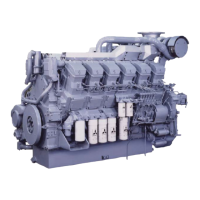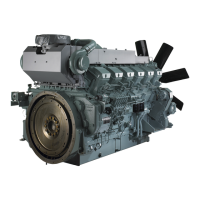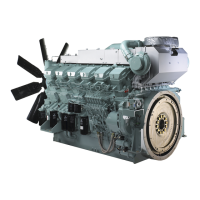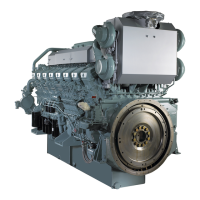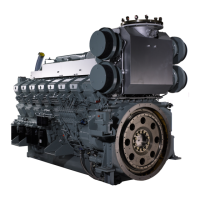Chapter 3 OPERATION
3-9
Checking Fuel Level in Tank
When handling fuel, make sure there are no flames near the engine.
Wipe any spilled fuel completely. Spilled fuel can ignite and cause fire.
Do not remove the strainer when filling the fuel tank.
Use fuel specified in "Fuel" (4-2).
Check the fuel level if it is full.
If the fuel level is low, add fuel to FULL level in the level gage.
Draining Water from Fuel Tank
When handling fuel, make sure there are no flames or heat source in the area.
Wipe any spilled fuel completely. Spilled fuel can ignite and cause fire.
Do not remove the strainer when filling the fuel tank.
Use fuel specified in "Fuel" (4-2).
Fuel mixed with water and/or dust not only reduces the
output but can also cause malfunctions of the fuel sys
-
tem. Drain water from the fuel tank by following proce-
dures below.
1 Place a fuel receiving tray (capacity: 2 L [0.53 U. S.
gal] or more) under the drain cock on the fuel tank.
2 Open the drain cock on the fuel tank, and drain at
least 1 to 2 L [0.26 to 0.53 U. S. gal] of fuel.
3 Make sure water and dust particles were drained
together with fuel, then close the drain cock.
Checking Engine Oil Level
1 Pull out the oil level gage and wipe it with a cloth.
2 Insert the oil level gage fully into the oil level gage
guide, then pull out the gage again.
3 The oil level should be between the MAXIMUM and
MINIMUM marks on the oil level gage.
4 If the oil level is low, remove the oil filter cap and add
engine oil of the specified type to the MAXIMUM
level.
5 Securely tighten the oil filler cap after adding the
engine oil.
6 Check the oil pan and other parts for oil leakage.
fig.3-18 Draining water from fuel tank
Drain cock
fig.3-19 Oil filler and oil level gage
Oil filler
Oil level gage
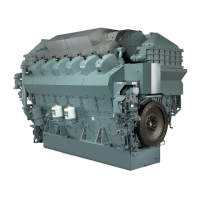
